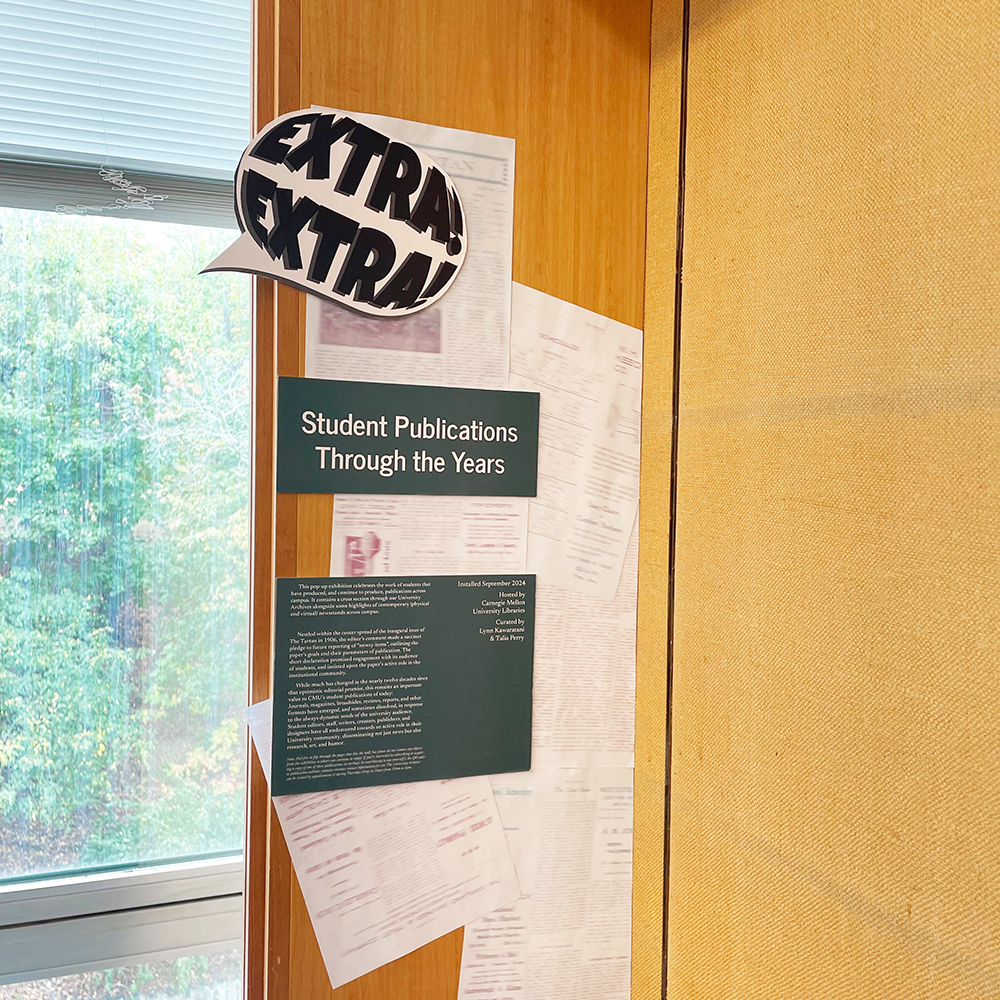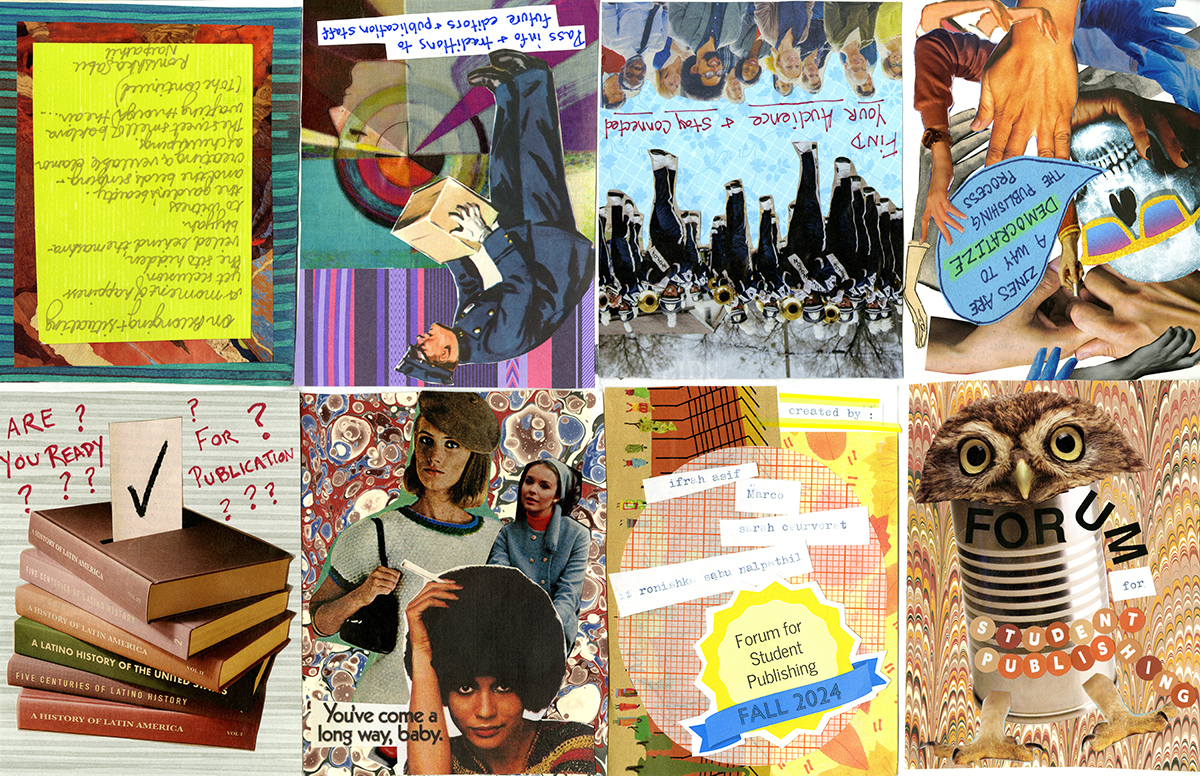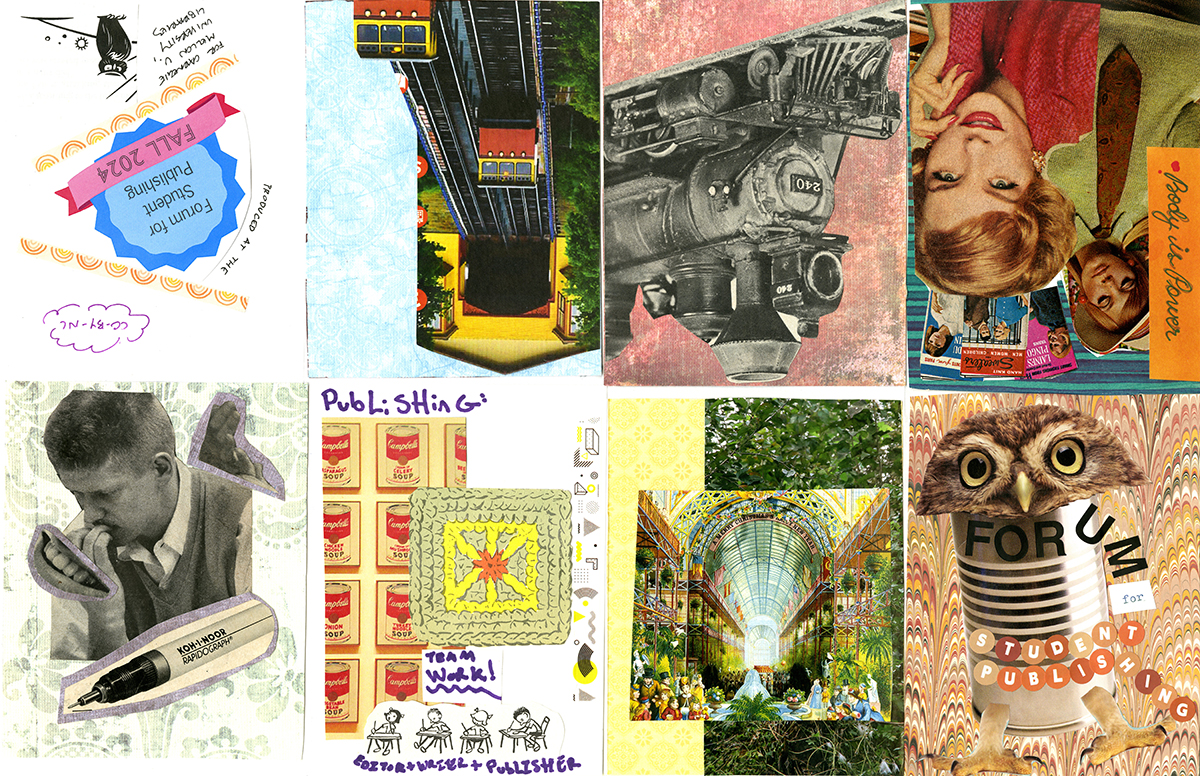
by Sarah Bender
On September 3, a new pop-up exhibit opened on the fourth floor of Hunt Library to celebrate the history and innovation of student publications across CMU. “EXTRA! EXTRA! Student Publications Through the Years” features 31 issues and covers created by students, including both contemporary publications and historic publications provided by the University Archives.
Back in June 2024, the University Libraries became the home of all university press activities, including the Carnegie Mellon University Press, ETC Press and the Library Publishing Service (LPS). Now, Digital Projects and Publishing Specialist Talia Perry — along with help from Arts and Humanities Librarians Lynn Kawaratani and Jill Chisnell — aims to recognize the incredible impact that publications created by students have had on campus over the years, both to the campus community and the students who participate.
 “Working on student publications is particularly special because you really get a sense of the voices on campus. I started working on both “The Tartan” and “The Oakland Review” my very first semester at Carnegie Mellon and instantly fell in love,” said Dietrich College of Humanities and Social Sciences senior Jennifer Bortner. “Both publications reveal campus perspectives in their own niche way. At “The Tartan,” there are so many disciplines that all come together to put together a single issue. Our editorial staff includes everyone from engineers to artists to writers. Meanwhile, “The Oakland Review” almost acts as an extension of the Creative Writing Program where anyone with a love of literature and art can come together. Both publications are instrumental, in my opinion, to fostering and expanding the Carnegie Mellon community, giving students an opportunity to express themselves fully.”
“Working on student publications is particularly special because you really get a sense of the voices on campus. I started working on both “The Tartan” and “The Oakland Review” my very first semester at Carnegie Mellon and instantly fell in love,” said Dietrich College of Humanities and Social Sciences senior Jennifer Bortner. “Both publications reveal campus perspectives in their own niche way. At “The Tartan,” there are so many disciplines that all come together to put together a single issue. Our editorial staff includes everyone from engineers to artists to writers. Meanwhile, “The Oakland Review” almost acts as an extension of the Creative Writing Program where anyone with a love of literature and art can come together. Both publications are instrumental, in my opinion, to fostering and expanding the Carnegie Mellon community, giving students an opportunity to express themselves fully.”
From the first issue of “The Tartan” published in 1906, student publications on campus have given students an active role in their university community, allowing them to disseminate not just news but also research, art, and humor. In the decades since, numerous other works have emerged, including “Lemon,” “inter•punct,” and “readme” — all highlighted in the exhibit. Visitors can also see publications that are no longer available on campus today, such as engineering journal “Carnegie Technical,” published from 1936 through 1974, and humor and literary magazines like “Great Scott” and “Patterns.”
For Bortner, who serves as co-editor-in-chief for “The Oakland Review” and publisher for “The Tartan,” the exhibit is an opportunity to celebrate the publications and their impact in a new way. “Having our work recognized by the University Libraries is a really lovely homage to the archive of community these groups create, with publications like the student newspaper acting as a record keeper of the university's inner workings and our literary/arts magazines providing creative insight into who Carnegie Mellon students are,” she said.
Exhibit visitors are welcome to flip through the pages that line the walls. To subscribe or request a copy of one of the publications, scan the QR codes included in the exhibit to visit the publication websites.

For students currently involved in a publication on campus, Perry also hosted a Forum for Student Publishing on Monday, September 30. Publishers, managers, editors, writers, and designers from CMU publications like journals, magazines, newspapers, blogs gathered in IDeATe Studio A in Hunt Library to engage in practical skill-building and creative exploration.
The event was packed with different talks and activities, from a behind-the-scenes look at the many steps that go into the assembly of a publication to a zine gallery walk, to a hands-on workshop where attendees had the opportunity to create their own zines. The Archives presented a show-and-tell session exploring the history of student publications on campus. Fellow students also had a chance to share their experiences starting up and maintaining various publications.
A roundtable broke down the menu of publishing-related service offerings at the Libraries for those interested in learning more about helpful resources. Then, at the end of the day, attendees enjoyed refreshments and networked to learn more about the work of their peers.
“Inspiration for this initiative has really been the amazing work that these students keep producing — I wanted, and still want, to find new ways to support them,” Perry said. “Despite their wildly diverse subjects, styles, and modes of production, student publications face a lot of shared challenges. My hope is that this exhibit and the Forum can help grow a student publishing community of practice, to encourage these students to learn from each other and build on the work happening across CMU's campuses.”

